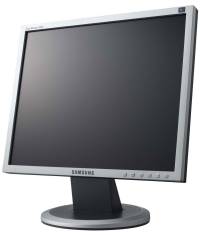 As part of my revamp of the house (and in particular the home office) I’m looking around at LCD monitors. They’ll be good for saving space on the new desks, making the computers less obtrusive.
As part of my revamp of the house (and in particular the home office) I’m looking around at LCD monitors. They’ll be good for saving space on the new desks, making the computers less obtrusive.
LCDs used to be incredibly expensive. The reviews on sites like Dan’s Data show that just a couple of years ago, you could pay well over A$1000 for a 17 inch LCD. Thankfully they’ve fallen below the $400 mark now, which seems much more reasonable. They’ve also got much faster, with 4 or 8ms response times being very common. This is the good thing about being several steps behind the early adopters.
I could go more expensive for bigger, but I’ve been living with 15 and 17 inch CRTs so long that I don’t see the need to go bigger, since that would make the computers more obtrusive, I’ll gain in viewable area anyway, and I’d prefer two monitors an identical size to avoid the kids squabbling over who gets to use which.
Asking around, it would seem two good brands to look at are Samsung and BenQ, in part for their value for money, but also things like clearly defined dead pixel policies.
Samsung’s policy: any dead pixels in the first 7 days, they’ll swap for a new monitor at place of purchase. After that, any dead pixels in the 8cm x 8cm square in the middle warrants replacement, or 3 or more dead elsewhere. (The policies are different for bigger screens).
BenQ’s policy: any dead pixels in the first 7 days warrants replacement. Beyond that, anything in the middle 9th of the screen, and more than 2 bright dots and 3 dark dots elsewhere will trigger replacement.
Digital input, which neither of my computers are currently equipped for, appears to cost about $20 extra. Might as well get it for future use.
And of course there’s the vital question: silver, or black? (Not as obvious as for something like TV gear, where as far as I’m concerned, it’s black all the way.)
Next pay day, it’ll be time to go shopping.

 As part of my revamp of the house (and in particular the home office) I’m looking around at LCD monitors. They’ll be good for saving space on the new desks, making the computers less obtrusive.
As part of my revamp of the house (and in particular the home office) I’m looking around at LCD monitors. They’ll be good for saving space on the new desks, making the computers less obtrusive.